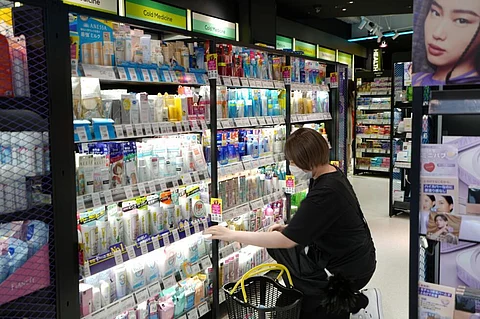
- NEWS
- the EDIT
- COMMENTARY
- BUSINESS
- LIFE
- SHOW
- ACTION
- GLOBAL GOALS
- SNAPS
- DYARYO TIRADA
- MORE

TOKYO (AFP) — When YouTuber Hannah Price set out to compare Japanese and Australian sunscreen, she wasn’t expecting her deep dive into the subject to rack up over two million views.
The huge number of people poring over Price’s video shows the growing interest in skincare products from Japan, much like the K-beauty phenomenon from South Korea.
It includes sun protection, increasingly recognized as a daily essential by influencers who want to shield their skin from ageing and enthuse about the lightweight texture of Japanese brands.
Companies that have perfected their secret formulas want to capitalize on booming demand, including by building factories overseas and selling to Japan’s record influx of foreign tourists.
Price, 32, fell into a “year-long rabbit hole” while making her video, learning about everything from SPF science to cultural attitudes to sun exposure.
“I always loved Japanese sunscreen, since I first moved to Japan in 2012,” she told Agence France-Presse at her studio in Tokyo.
“I remember trying it for the first time and thinking, ‘this is so much better than anything I tried in Australia’,” her home country where sun cream felt “thick, sticky, greasy.”
“I thought that the video would be popular... but I wasn’t expecting it to reach as far” as it did, Price said.
The habit of regular sunscreen use is spreading, especially among younger generations, said Takuya Wada, who works in marketing for Japanese chemical and cosmetics firm Kao.
“There are no borders when it comes to obtaining information on social media, especially Instagram and TikTok,” he said, adding that influencer posts have a “very large” impact on global sunscreen sales.
The global skincare market was worth more than $115 billion in 2024 and is expected to grow to $194 billion by 2032, according to Fortune Business Insights.
Kao’s main sunscreen brand Biore UV is ranked 10th worldwide for sales, and second in Asia — competing with the likes of L’Oreal and Beiersdorf and Japanese rivals such as Shiseido.
The company wants sales from sun protection to reach 35 billion yen ($240 million) in 2027, up 1.6 times from 2023.
It plans to boost overseas production by opening three new sunscreen factories, in Indonesia, Brazil and Germany.
